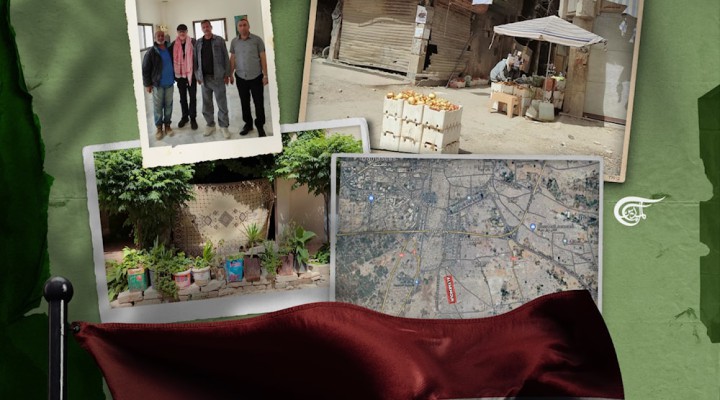Life returns to Yarmouk camp

The Palestinian factions have come together, as in Palestine, and the community in Yarmouk is rebuilding, with basic support from the Syrian state.
Much of Yarmouk camp looks like Gaza, a wasteland to which it is hard to imagine life returning. But 8,000 families (more than 30,000 people) have returned in recent years (just 50 families never left) and there is slow reconstruction, including six primary schools.
During the Dirty War on Syria, the US and Israeli terrorist proxies Jabhat al Nusra and ISIS invaded Yarmouk camp, a historic refuge for displaced Palestinians in Syria. This “camp” is actually a southern suburb of Damascus and, at its peak, it housed more than 150,000 people.
With the terrorist occupation, the Syrian Arab Army imposed a perimeter to prevent the armed gangs from entering Damascus. Palestinian militia, led by the Popular Front for the Liberation of Palestine – General Command (PFLP-GC) remained in the camp and engaged the armed groups. Aid sent in was sniped at as a humanitarian disaster loomed. US propaganda falsely blamed the Syrian government.
Nusra and ISIS killed anyone even remotely associated with the Syrian government, as Washington and “Israel” wished. They never lifted a finger against the Israelis. Eventually, in 2018, with the camp virtually emptied of civilians, the Syrian Army drove ISIS out of Yarmouk and down south to death or to their safe havens in Jordan and “Israel”. More than 1,000 civilians and 700 Palestinian fighters (400 of them PFLP-GC) were killed.
The occupation, which included extensive damage to facilities, including the cemetery, was intended to divide the Palestinian population and erase their history.
But the Palestinian factions have come together, as in Palestine, and the community is rebuilding, with basic support from the Syrian state. The pattern is the same that has taken place in the eastern Ghouta area: the roads are bulldozed clear, water tanks are installed, and the first stage of electricity is installed. Rubble is being used to create building materials, and all of the construction is done by local residents.
In a tour arranged by Abu Atef from the PIJ, I visited the destroyed areas and a building materials center inside the former sports center. One sports building has been rebuilt and one soccer field, which still lacks its artificial grass. There is a swimming pool for women.
Elsewhere, in the less damaged buildings, many have returned to their houses and small businesses. The more impressive buildings are the schools (three set up by UNRWA), the Syrian Red Crescent, and some other government facilities. The main mosques and hospitals were mostly destroyed and there is little sign of rebuilding as yet. Yet many families, for example those who fled to Jarmana and other parts of Damascus, have returned and are determined to rebuild their lives and culture in this historic refuge.
 TheAltWorld
TheAltWorld 

0 thoughts on “Life returns to Yarmouk camp”